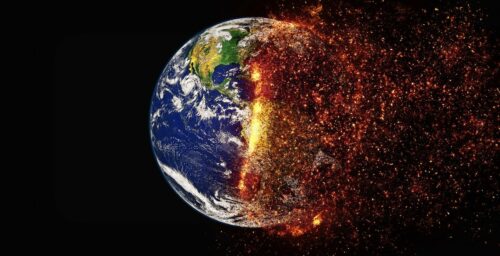Image Courtesy of Pixabay.
The phrase “Live every day like it’s your last” is frequently thrown around. However, this advice is remarkably difficult to obey, in part because it is remarkably difficult to believe. In Adam McKay’s movie Don’t Look Up, people are informed by indisputable science that an impending comet will destroy the Earth in about six months; however, much of the world remains disturbingly in denial. People carry on with their lives, concerning themselves with trivial celebrity relationships and the presidential reelection.
This film overtly underscores the pervasive denial of scientific facts. In our society today, plagued by COVID-19 and threatened by climate change, the movie’s message to trust science is all too relevant. Despite newspapers, scientific research, statistics, and distressing anecdotes, many refuse to get vaccinated, wear a mask, or make environmentally sustainable life choices. Of course, it is easier to ignore the fact that thousands of people die daily from COVID-19 or to deny that a comet is descending upon us. Without belief, there is no need for lifestyle changes, but there is also no hope for a solution.
What, then, does it take to make people believe? In the film, as the end of the world looms closer and closer, hordes of Americans rally behind the “Don’t Look Up” movement, blissfully ignorant of the enormous comet shining above them. It is not until one man looks up that the crowd follows, unveiling the truth. Seeing the comet for themselves makes them believe in its existence. While perceiving for oneself is likely more effective than statistics, it is unfortunately not always possible. In this case, by the time it became possible, their fate was imminent. Nothing could be done. Believing no longer mattered.
This raises the more nuanced question: what does it take to make people believe before it is too late? Perhaps we can take a lesson from this rallying scene. It was one man, importantly an insider of the “Don’t Look Up” movement, who catalyzed a whole crowd’s belief. We should not underestimate the power of convincing just one disbelieving person of a scientific truth. Not only does each vaccinated, masked, or recycling person make a difference, but each also has the power to communicate beliefs from within social networks. Just as one head turning up turns others, one conversation can lead to many more.
The movie divides people into two groups: believers and deniers. Yet, among the believers, some strive to solve the problem for the world and some strive to solve it for themselves. While many scientists work to destroy the comet to save Earth, others focus their attention on finding personal escapes from the disaster. Don’t Look Up’s message is more than just to trust science. Believing alone isn’t enough to prevent the spread of COVID or global warming, and our conversations cannot stop there. These disasters affect us all, and just as we do not face them alone, we must use knowledge of them to protect, not just ourselves, but everyone.

